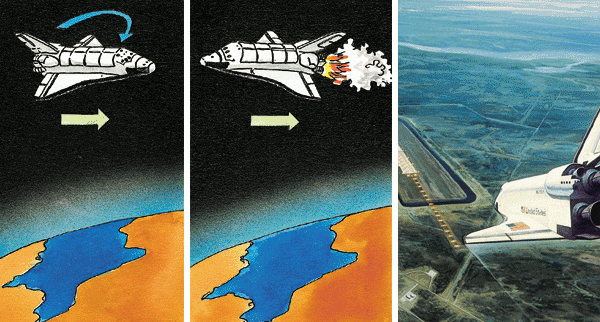August 6, 2003
Returning to Earth
Given that a satellite may be travelling at speeds up to 28,000 kph, the friction forces it is subjected to on re-entering Earth’s atmosphere cause it to burn up. Spent spacecraft and hardware are destroyed intentionally this way by allowing them to fall back to Earth.
However, it is possible—and may indeed be vital—to bring a spacecraft back to Earth intact, by taking certain precautions.
How it works ...
|
This is a tricky operation that involves slowing the satellite, since it will remain in orbit for as long as its momentum is sustained by gravity alone.
The satellite only needs to be slowed by 1% to de-orbit it so that it falls into the atmosphere. However, it must be brought back on a precise trajectory: if the inclination is either too high or too low, the satellite may burn up or bounce back into space. It must also be protected by a heatshield against the extreme heat generated during re-entry.
It must also be protected by a heatshield against the extreme heat generated during re-entry.
Two de-orbiting methods are currently used to bring a spacecraft back to Earth:
It must also be protected by a heatshield against the extreme heat generated during re-entry.
Two de-orbiting methods are currently used to bring a spacecraft back to Earth:
- For a capsule, the engine is pointed forward and then fired so as to brake the spacecraft. The capsule separates from the spacecraft and re-enters the atmosphere. Its descent is then slowed by a parachute and it touches down automatically.
- For a space shuttle, the entire spacecraft returns to Earth. After performing a 180° braking turn, the shuttle re-establishes its normal attitude and re-enters the atmosphere in a nose-up, belly-first position. It then makes several turns before landing like an aircraft. The shuttle has to be piloted manually during the final stages of its flight.

